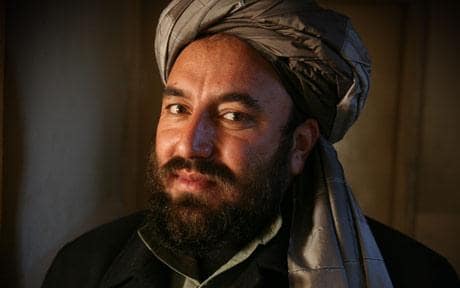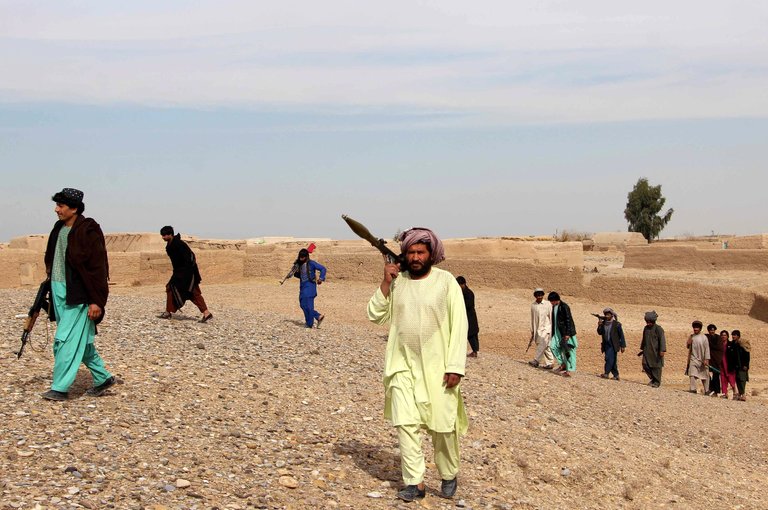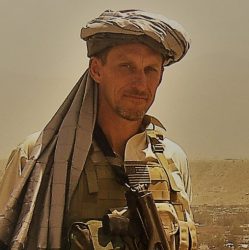“Taliban Take an Afghan District, Sangin, That Many Marines Died to Keep” said the New York Times a few days ago which, in classic demonstration of poor headline writing, turned out to be technically not true. Located further down in the Times story was a quote from an Afghan National Army (ANA) spokesman who explained what they had moved from the district center to a new base.
“It is not true,” Maj. Gen. Dawlat Waziri, the spokesman for the Ministry of Defense, said of the reports of Sangin’s fall. “We relocated an army battalion in Sangin, we moved them to a newly built garrison. Whenever we move our forces in Sangin, they claim that they capture Sangin.”
Long War Journal’s Bill Roggio’s pointed out the obvious which is if the Taliban control the Sangin district center then they control the district. With an ANA battalion somewhere in the district the central government can claim some degree of control but in reality the tribes control Sangin and have ever since the Marines left. According to the standard Afghanistan counterinsurgency narrative it would appear the Taliban now has the momentum it needs to prevail in it’s confrontation with the Government of the Islamic Republic of Afghanistan (GoIRA). But appearances are deceptive in Helmand province.
What is happening in Sangin district has little to do with the Taliban movement and everything to do with incessant inter-tribal conflict to control land, patronage and the lucrative poppy trade. The quote below from a Marine who served as an embedded trainer to the ANA sums the situation up well.
“The issues in Sangin are so much deeper than Taliban versus ANA,” one of the last U.S. Marines to serve as a combat adviser in the district, Dom Pellegrini, told Checkpoint, using the acronym for the Afghan National Army. “Those categories aren’t at all adequate to describe what was going on, and I’m not sure I ever figured out what was going on. It was a drug war, I guess.”
In 2011 the Marines were able to bring one of the tribes, the Alikozai, into the government fold. Bill Ardolino writing at The Long War Journal examined this development in detail at the time concluding:
Thus, this reported alliance with the government and the Marines in Sangin may represent less of a watershed political breakthrough and more of an accommodation with a minority of the district as they seek advantage in a bloody tribal grudge match.
The Alikozai tribe gained power and influence after siding with the government in 2011; Helmand expert Mike Martin described what happened next in this 2016 Washington Post article:
Many in the local government and police hailed from one local tribe, the Alikozai, which historically had battled for drug profits with the neighboring Ishaqzai tribe. The Ishaqzai, predictably, threw in their lot with the Taliban.
“The police in Sangin are a drug militia belonging to one tribe, and the Taliban are another drug militia. Whoever controls the Sangin bazaar is able to tax the drug crop. Hence why people fight for control of the bazaar,” next to which FOB Jackson was located, Martin said.
The Ishaqzai had thrown their lot in with the Taliban back in 2006 which was when the other big tribes around Sangin including the Alizai and Noorzai did the same. They joined the Taliban after the provincial governor at the time, Sher Mohammad Akundzada, (a leader in the Alizai tribe) was sacked (at the insistence of the British) due to his participation in the opium trade. Sher Mohammad Akundzada was President Karzai’s brother-in-law and was key to holding the fragile Durrani tribal alliance that Karzai was using to hold the southern portion of the country together. At the time of his sacking Akundzada said he was being forced to turn his 3000 man militia over to the Taliban because he could no longer pay them. The Durrani tribes in the Helmand then started to turn on the Karzai government to protect their land and booming poppy trade.

The Helmand tribes turned to Taliban funding networks (Quetta shura, or Peshawar shura or the Haqqani network) to gain the resources required to fight the government and ISAF but they never ceded operational or tactical control to those networks. They fought for the survival of their tribes in a province that produces 90% of the world’s illicit opium supply turning Helmand into the most dangerous province (measured by ISAF casualties) in Afghanistan.
By relocating the ANA Kandak that was in Sangin outside the district center GoIRA has removed itself from the middle of a tribal civil war fueled by poppy, power and position. The Taliban are not going to come in and seize the district because the “Taliban” are already live there; it’s their district.
There is no reason to rush back into the district center to re-claim it because the government has never really held it to begin with. The Marines heading to Helmand province this summer know the history of the tribes, the players involved and what’s driving the cycle of violence province wide. But knowing the root of the problems and being able to address those problems is a problem. A problem because it requires lots of coalition building, chin wagging and horse trading among the tribes but very little (if done correctly) shooting.
Solving that kind of problem is one of the challenges facing Task Force Southwest but (ideally) one that requires expert language skills, political juice and the kind of credibility that takes years to establish. Task Force Southwest needs a Pashto speaking diplomat, who is known to the tribes, and has the proper authority for deal making. They may have one for all I know as the Department of State would normally contribute appropriate level personnel to a Task Force of this nature.
They could also use an Islamic Chaplin but the military doesn’t have many of them which is a pity. The only untainted line of communication to the common people in Helmand province is through the Mullahs who are independent of the tribes because they come from outside the tribal system. It is the common farmer who benefits from stability (and who must, by now, be sick of war) who will listen to arguments from the Mullahs. Taking your case directly to the people is another way to bring pressure on both tribal and government leaders to do the right thing. That type of effort would require an American Chaplin (with serious Islamic Scholarship credentials) coordinating with the senior Mullahs. I’ve heard of at least two who fit the bill over the years but do not know if they remain in the service. If they do the next TF Southwest rotation should include one.

Did Afghanistan lose Sangin district to the Taliban? No; they simply moved their army out of the way of the tribal infighting which they should have done when the Marines pulled out in 2014. Is it there a chance the Marines will be able to decrease the level of violence in Sangin district? Probably not; they are other issues closer to the capitol of Lashkar Gah they are going to have to focus on first.
The situation on the ground facing Task Force Southwest is complex and given our past inability to develop capable, cohesive, proficient Afghan Security Forces, seemingly hopeless. The Marines think they are going to deliver positive change in Helmand province and by stiffening the Afghan Security Forces. I’m not sure how that will work but know what the Marines know and also know they are not, as an institution, comfortable with failure. If they think they can make a difference then my money is on them.
This is going to be the most important yet least covered combat deployment of a generation. You can help ensure this high risk deployment is covered honestly and fairly by supporting independent, expert combat journalism…. donate today at the Baba Tim Go Fund Me page.


